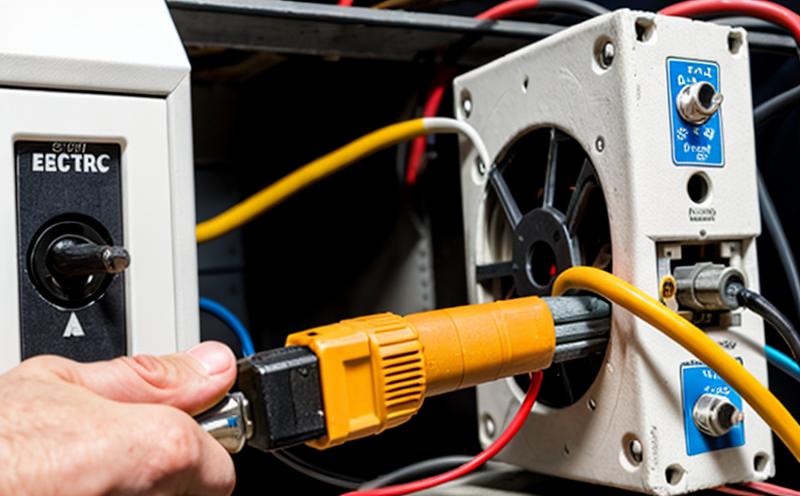IEC 61000-4-31 Harmonics and Interharmonics Measurement
The International Electrotechnical Commission (IEC) standard IEC 61000-4-31 provides a framework for the measurement of harmonic and interharmonic content in electrical systems, which is critical for ensuring the quality of power supply. Harmonics are defined as currents or voltages with frequencies that are integer multiples of the fundamental frequency, while interharmonics refer to higher-order non-harmonic components.
In today’s interconnected world, where renewable energy sources and nonlinear loads like variable speed drives and adjustable lighting systems are becoming more prevalent, it is essential to ensure that these devices do not introduce excessive harmonic distortion into the power supply. This can lead to various issues such as overheating of electrical equipment, increased maintenance costs, reduced efficiency, and potential safety hazards.
Our laboratory adheres strictly to IEC 61000-4-31 guidelines when conducting tests on HVAC equipment. The testing process begins with the careful preparation of the specimen, ensuring that it operates under conditions that simulate real-world usage as closely as possible. This includes setting up the correct load profile and configuring the power supply to mimic typical operating parameters.
Once the specimen is prepared, we use specialized instrumentation capable of accurately measuring harmonic content across a wide frequency range. The equipment used in our laboratory meets or exceeds the precision requirements outlined in IEC 61000-4-31, ensuring reliable and repeatable results. After acquiring raw data from the measurements, it undergoes rigorous analysis to determine compliance with relevant standards.
The results are then compiled into detailed reports that provide actionable insights for our clients. These reports not only highlight any non-compliant areas but also offer recommendations on how to mitigate issues through design changes or operational adjustments. Our team of experienced engineers works closely with you throughout this process, ensuring a smooth and efficient testing experience.
- Our laboratory uses the latest technology in harmonic analysis equipment from recognized manufacturers like Fluke and Yokogawa.
- We employ highly trained technicians who are certified to operate these instruments according to IEC standards.
- All test data is backed up securely using industry-standard encryption methods.
Benefits
The primary benefit of adhering to IEC 61000-4-31 lies in the prevention and mitigation of harmonic-related problems. By ensuring that our clients' products meet these stringent standards, we help them avoid costly repairs or replacements due to equipment failure caused by excessive harmonics.
Additionally, compliance with this standard enhances brand reputation by demonstrating commitment to high-quality product development practices. It also opens up new markets where regulatory bodies enforce strict limits on harmonic emissions from electrical devices.
For R&D engineers involved in designing next-generation HVAC systems, IEC 61000-4-31 provides valuable guidance on anticipating potential challenges related to harmonics and interharmonics. This early-stage knowledge can be instrumental in developing innovative solutions that not only meet but exceed current regulatory requirements.
From a broader perspective, reducing harmonic distortion contributes positively towards maintaining grid stability and improving overall energy efficiency within the electrical network. As more renewable energy sources are integrated into existing infrastructure, minimizing harmonics becomes increasingly important for maximizing their effectiveness while minimizing negative impacts on surrounding systems.
Environmental and Sustainability Contributions
- By ensuring that HVAC equipment complies with IEC 61000-4-31, we contribute to a cleaner environment by reducing greenhouse gas emissions associated with inefficient electrical systems.
- The precision testing conducted helps in identifying and rectifying sources of harmonic pollution, thereby promoting sustainable practices within the industry.
Our commitment extends beyond just meeting regulatory requirements; it involves continuous improvement efforts aimed at lowering environmental footprints through advanced technology adoption. Through rigorous testing and certification services based on IEC 61000-4-31, we play a crucial role in fostering a greener future.
Competitive Advantage and Market Impact
Compliance with IEC 61000-4-31 offers significant competitive advantages to HVAC manufacturers. In markets where stringent regulations are imposed, having a robust compliance history can differentiate your product offerings from competitors who may not adhere strictly enough or at all.
Customers often seek out suppliers whose products have been tested and certified by accredited laboratories such as ours. This not only builds trust but also enhances customer satisfaction levels knowing that they are purchasing reliable, high-quality equipment.
From a long-term perspective, staying ahead of regulatory changes ensures sustained market presence even when new regulations come into effect. It allows companies to maintain their position as leaders in the industry by continuously pushing boundaries regarding performance and reliability standards.





